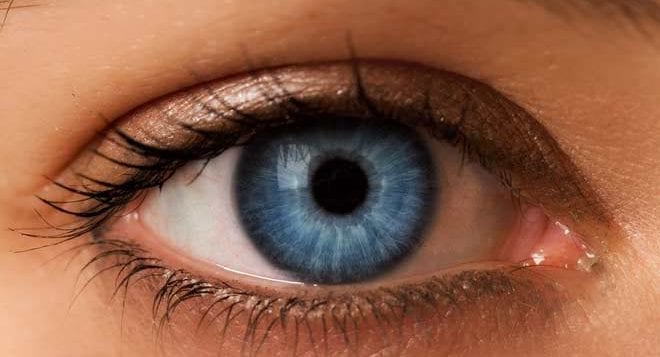Medical Compass: Addressing vision loss with type 2 diabetes
Diabetic retinopathy can lead to blurred vision and blindness
By David Dunaief, M.D.

With diabetes, we tend to concentrate on stabilization of the disease as a whole. This is a good thing. However, there is not enough attention spent on microvascular (small vessel disease) complications of diabetes, specifically diabetic retinopathy, which is an umbrella term.
This disease, a complication of diabetes that is related to sugar control, can lead to blurred vision and blindness. There are at least three different disorders that make up diabetic retinopathy. These are dot and blot hemorrhages, proliferative diabetic retinopathy and diabetic macular edema. The latter two are the most likely disorders to cause vision loss. Our focus for this article will be on diabetic retinopathy as a whole and on diabetic macular edema, more specifically.
Diabetic retinopathy is the number one cause of vision loss in those who are 25 to 74 years old (1). Risk factors include duration of diabetes, glucose (sugar) that is not well controlled, smoking, high blood pressure, kidney disease, pregnancy and high cholesterol (2).
What is diabetic macula edema, also referred to as DME? This disorder is swelling, due to extracellular fluid accumulating in the macula (3). The macula is a yellowish oval spot in the central portion of the retina — in the inner segment of the back of the eye — and it is sensitive to light. The macula is the region with greatest visual acuity. When fluid builds up from blood vessels leaking, there is potential loss of vision.
The highest risk factor for DME is for those with the longest duration of diabetes (4). DME is traditionally treated with lasers. But intravitreal (intraocular — within the eye) injections of a medication known as ranibizumab (Lucentis) may be as effective as laser. Unfortunately, many patients are diagnosed with DME after it has already caused vision loss. If not treated after having DME for a year or more, patients can experience permanent loss of vision (5).
In a cross-sectional study (a type of observational study) using NHANES data from 2005-2008, among patients with DME, only 45 percent were told by a physician that diabetes had affected their eyes (6). Approximately 46 percent of patients reported that they had not been to a diabetic nurse educator, nutritionist or dietitian in more than a year — or never.
The problem is that the symptoms of vision loss don’t necessarily occur until the latter stages of the disorder. According to the authors, there needs to be an awareness campaign about the importance of getting your eyes examined on an annual basis if you have diabetes. Many patients are unaware of the association between vision loss and diabetes.
Treatment options: lasers and injections
There seems to be a potential paradigm shift in DME treatment. Traditionally, patients had been treated with lasers. The results from a randomized controlled trial, the gold standard of studies, showed that intravitreal (delivery directly into the eye) injections with ranibizumab, whether given prompt laser treatments or treatments delayed for at least 24 weeks, were equally effective in treating DME (7).
Increased risk with diabetes drugs

You would think that drugs to treat type 2 diabetes would prevent DME from occurring as well. However, in the THIN trial, a retrospective (backward-looking) study, a class of diabetes drugs, thiazolidinediones, which includes Avandia and Actos, actually increased the occurrence of DME compared to those who did not use these oral medications (8). Those receiving these drugs had a 1.3 percent incidence of DME at year one, whereas those who did not had a 0.2 percent incidence. This incidence was persistent through the 10 years of follow-up.
To make matters worse, those who received both thiazolidinediones and insulin had an even greater incidence of DME. There were 103,000 diabetes patients reviewed in this trial. It was unclear whether the drugs, because they were second-line treatments, or the severity of the diabetes itself may have caused these findings.
This is in contrast to a previous ACCORD eye substudy, a cross-sectional analysis, which did not show an association between thiazolidinediones and DME (9). This study involved review of 3,473 participants who had photographs taken of the fundus (the back of the eye).
What does this ultimately mean? Both of these studies were not without weaknesses. It was not clear how long the patients had been using the thiazolidinediones in either study or whether their sugars were controlled and to what degree. The researchers were also unable to control for all other possible confounding factors (10). Thus, there needs to be a prospective (forward-looking) trial done to sort out these results.
Diet
The risk of progression of diabetic retinopathy was significantly lower with intensive blood sugar controls using medications, one of the few positive highlights of the ACCORD trial (11). Medication-induced intensive blood sugar control also resulted in increased mortality and no significant change in cardiovascular events. But an inference can be made: A nutrient-dense, plant-based diet that intensively controls blood sugar is likely to decrease the risk of diabetic retinopathy complications (12, 13).
The best way to avoid diabetic retinopathy is obviously to prevent diabetes. Barring that, it’s to have sugars well controlled. If you or someone you know has diabetes, it is imperative that they get a yearly eye exam from an ophthalmologist so that diabetic retinopathy is detected as early as possible, before permanent vision loss occurs. It is especially important for those diabetes patients who are taking the oral diabetes class thiazolidinediones, which include rosiglitazone (Avandia) and pioglitazone (Actos).
References:
(1) Diabetes Care. 2014;37 (Supplement 1):S14-S80. (2) JAMA. 2010;304:649-656. (3) www.uptodate.com. (4) JAMA Ophthalmol online. 2014 Aug. 14. (5) www.aao.org/ppp. (6) JAMA Ophthalmol. 2014;132:168-173. (7) ASRS. Presented 2014 Aug. 11. (8) Arch Intern Med. 2012;172:1005-1011. (9) Arch Ophthalmol. 2010 March;128:312-318. (10) Arch Intern Med. 2012;172:1011-1013. (11) www.nei.nih.gov. (12) OJPM. 2012;2:364-371. (13) Am J Clin Nutr. 2009;89:1588S-1596S.
Dr. Dunaief is a speaker, author and local lifestyle medicine physician focusing on the integration of medicine, nutrition, fitness and stress management. For further information, visit www.medicalcompassmd.com or consult your personal physician.
٭We invite you to check out our weekly Medical Compass MD Health Videos on Times Beacon Record News Media’s website, www.tbrnewsmedia.com.٭







